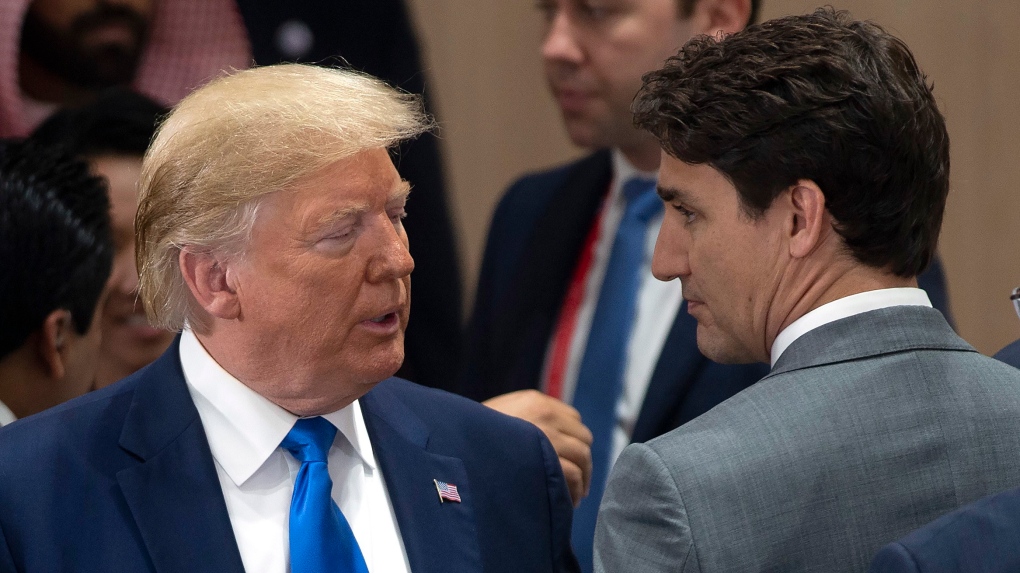 With Trump soon to be back in power, Canada, my home country, needs to focus on the opportunities, not our worst fears. That’s the key message in an opinion piece in last Saturday’s Globe and Mail, “Taking control of our relationship with Trump”. The article was co-authored by Janice Gross Stein (Belzberg Professor of Conflict Management and founding director of Munk School of Global Affairs, at University of Toronto), Edward Greenspon, and Drew Fagan.
With Trump soon to be back in power, Canada, my home country, needs to focus on the opportunities, not our worst fears. That’s the key message in an opinion piece in last Saturday’s Globe and Mail, “Taking control of our relationship with Trump”. The article was co-authored by Janice Gross Stein (Belzberg Professor of Conflict Management and founding director of Munk School of Global Affairs, at University of Toronto), Edward Greenspon, and Drew Fagan.
The article focused on negotiation strategy. As the Globe is behind a paywall, and not accessible to all, I’m sharing some of the article’s important messages.
A plan for mutual benefit
“We need a plan that identifies where our national interests converge and where we can deepen the relationship, including trade but not just trade, for our mutual benefit”
Winning cards
“Canada holds winning cards and now needs to focus on the most impactful ones. We should be playing our hand with the confidence of a country that has many of the answers to the problems that others face.” These include:
-
- Arctic security. There is a new opening to take the lead on Artic security, and aligned with U.S. and NATO interests.
- Energy security. We are the best alternative to China and Russia when it comes to potash, uranium, critical minerals and natural gas
- AI expertise. Canada’s world-leading expertise in AI is of interest to the U.S. and our other international friends; security.
- Access. If nativist U.S. immigration policies bar the door to global talent, Canada is conveniently only a hop, skip and jump away
We have successes to celebrate.
It falls on us to provide examples; to communicate our success stories.
Above all else
“Mr. Trump, as his aides will remind you, loves two things above all else: tariffs and negotiating. Canada’s task is to shift this attention from the former to the latter through a select collection of sectoral and security pacts.
Some might consider bargaining with Trump-led United States to be ill-timed at best, immoral at worst. But the classic counterbalancing options – a massive sales push to Chaina and India, or rapidly grow Canada’s population – are simply not on the table.”
Canada’s best approach
“Canada’s best approach, given Mr. Trump’s incomprehension of the concept of a win-win, is to quickly forge relationships with the new team, right up to the president, and move forward with a set of strategic proposals that transcend transaction bargaining. The focus should be on doing things together in areas where we can clearly help them, and sometimes where only we can help.”
(The vision) “In keeping with geopolitical pressures, combine security, economy and “continentalize” (co-investment, co-procurement, co-production) a limited number of joint activities. Our modern “Auto Pact 2.0” includes Artic security, critical miners, energy and advanced technologies.”
“Canada’s main mission now lies in marshalling our confidence to make bold policy decisions at home that enable us to become a more valuable “friend” to our biggest partner and the other friends we have in common. No one else has as much of what they (U.S.) need as we do.”
End Note
As negotiations ramp up and evolve, what level of trust will emerge at the negotiating tables? What signals of trust can each country send in advance of formal negotiations, to the other? For me, William Ury’s Trust Menu comes to mind.

Speak Your Mind